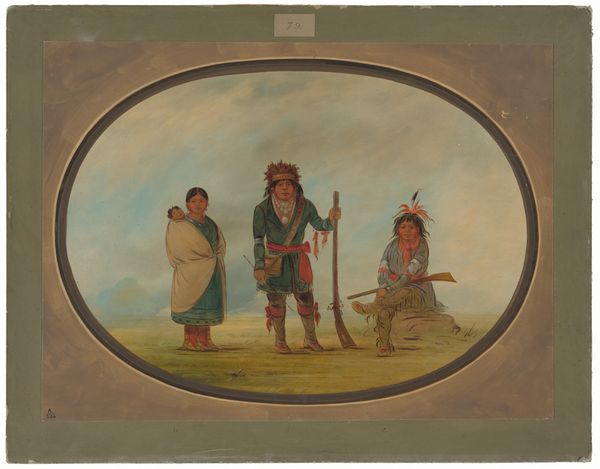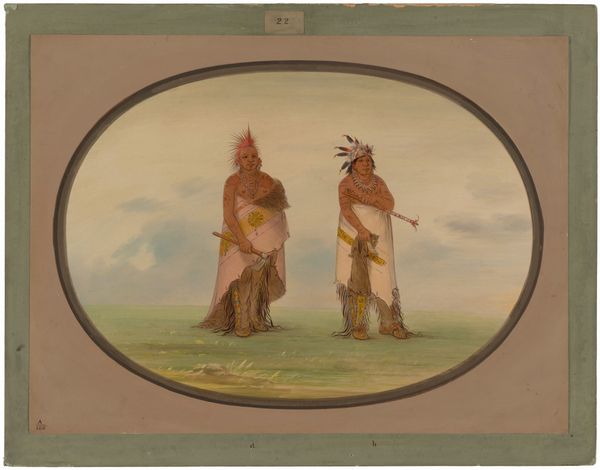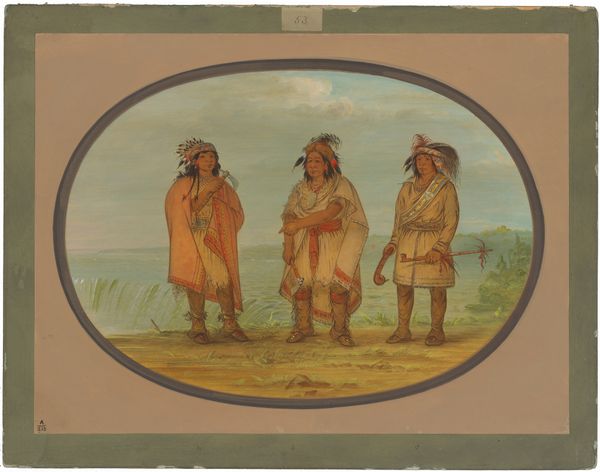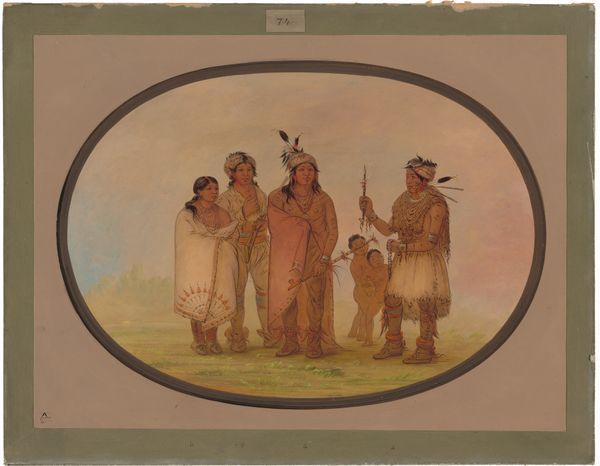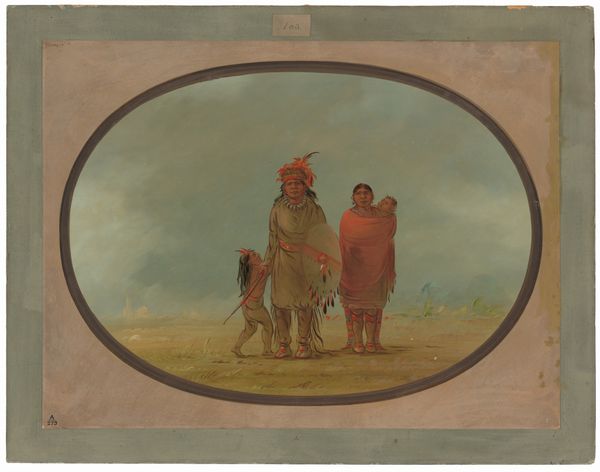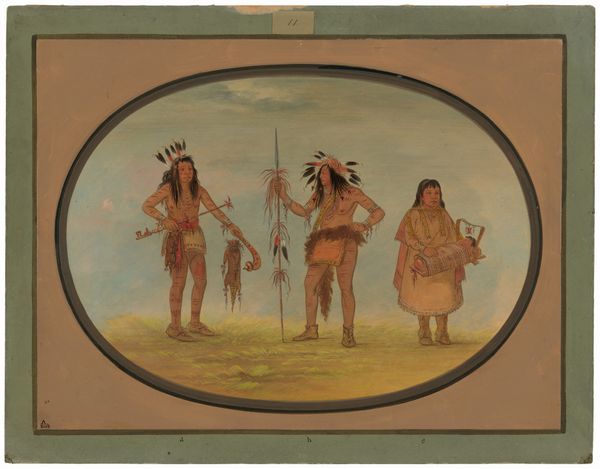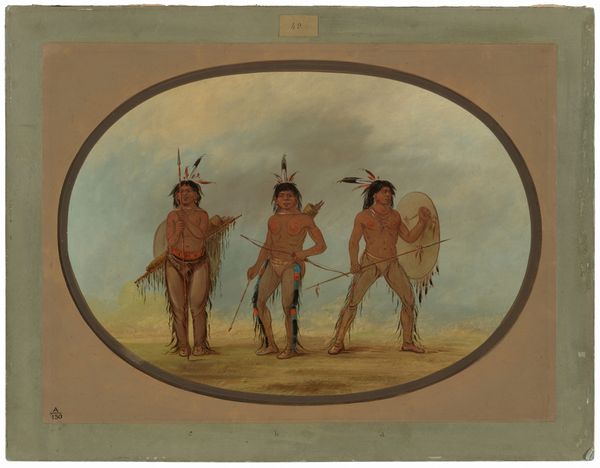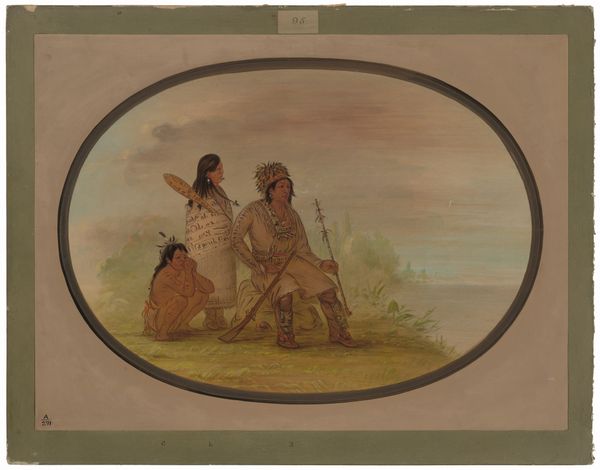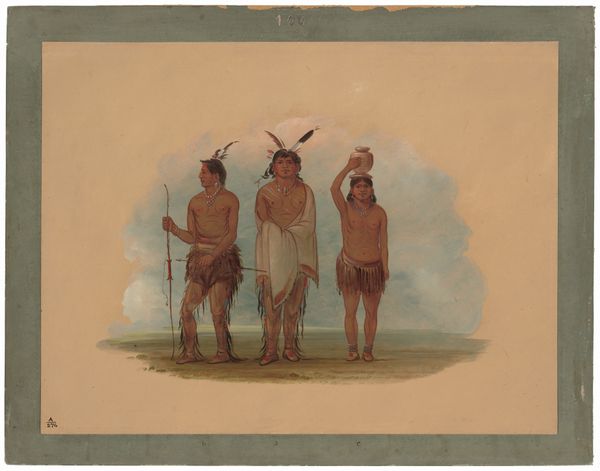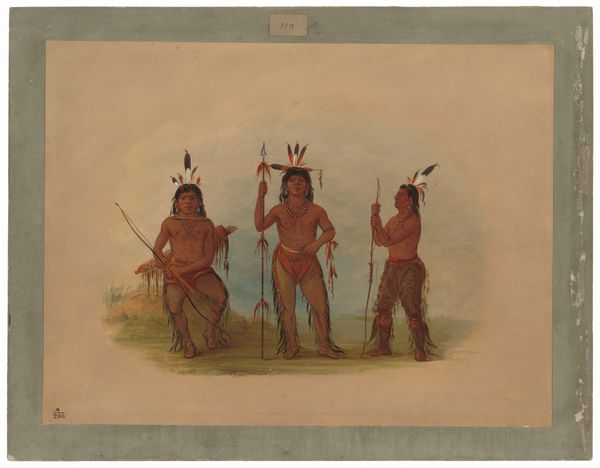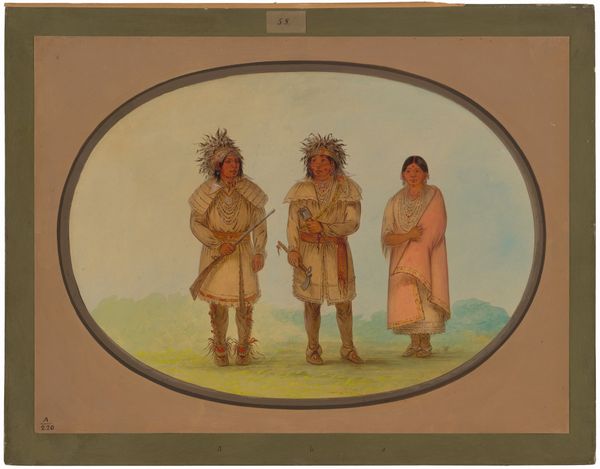
gouache, watercolor
#
portrait
#
water colours
#
gouache
#
watercolor
#
watercolor
Dimensions: overall: 46.8 x 63.2 cm (18 7/16 x 24 7/8 in.)
Copyright: National Gallery of Art: CC0 1.0
Curator: Look at the texture! The dryness of the watercolor gives this portrait, Three Iowa Indians by George Catlin, a somewhat faded and delicate affect. It was done sometime in the 1860s. Editor: Yes, immediately the oval format contributes to this sensation of viewing figures from a past era, a group almost receding into memory. Curator: The composition certainly adheres to an academic tradition of portraiture. Consider the symmetrical balance achieved by arranging the three figures along the horizontal axis, each carefully spaced and proportioned. Editor: But there’s a potent symbolism, too. Each figure carries a unique object– a spear, a pipe, and what appears to be either a painted hide or some kind of ceremonial fan. Are these symbolic of different roles, perhaps social or spiritual, within the Iowa tribe? Curator: The artist clearly focuses on capturing the likenesses, although their expressions remain somewhat impassive. Look at the way Catlin has delineated their clothing, the details in the fringes, the beading. The color palette also adheres to realism while simultaneously capturing their material culture. Editor: Indeed. The use of earth tones connects these men to their landscape. The slightly smudged, undefined horizon implies the vastness of the American landscape. Curator: And do you think there is a romanticism here, viewing indigenous peoples, to be precise, as emblematic of freedom and nobility? Editor: I do, definitely, given the cultural context of its creation and the period's tendency toward idealizing indigenous life. It suggests that Catlin tried to illustrate the power embodied within individuals, while perhaps unconsciously suggesting that power may soon wane. Curator: It provides us an enduring example of 19th-century portraiture and the complex interplay between objectivity and romanticization within it. Editor: Yes, its blend of clarity and evocation lingers in the mind, prompting us to consider the image's place within a long visual narrative.
Comments
No comments
Be the first to comment and join the conversation on the ultimate creative platform.
